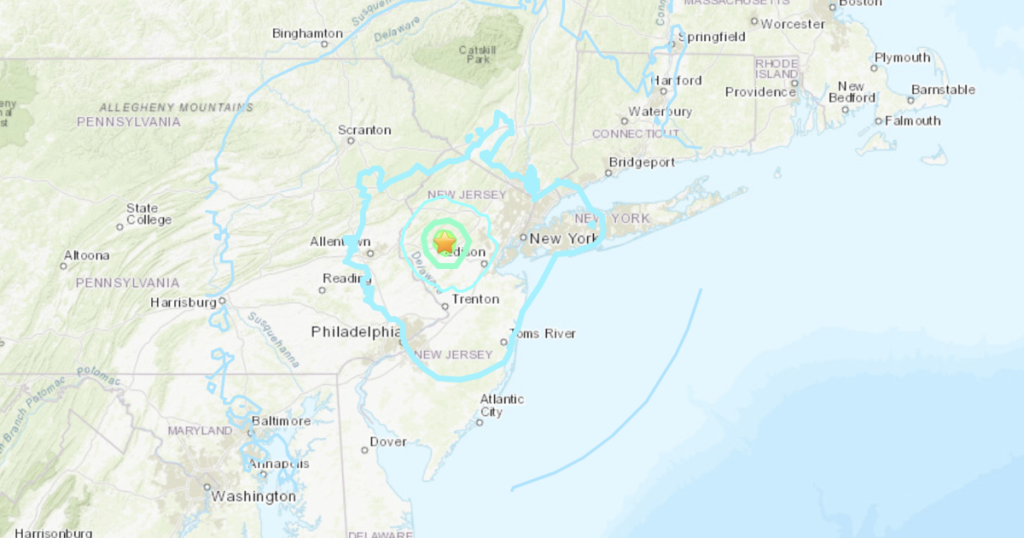A strong earthquake measuring 4.8 on the Richter scale struck near Whitehouse Station, New Jersey, 40 miles west of New York City, causing shockwaves throughout the Tri-State area and beyond, as far as Baltimore and Syracuse. The impact of the earthquake was widely felt, with reports of buildings shaking and rattling coming from New Jersey to Long Island. According to Governor Kathy Hochul, this was one of the largest earthquakes on the East Coast in the last century, and there is a concern about aftershocks following the initial quake. Assessment of the damage is underway, and New York officials have been in contact with New Jersey authorities given that the epicenter was in New Jersey.
New Jersey Governor Phil Murphy has activated the state’s Emergency Operations Center and urged residents not to call 911 unless it is a real emergency. Mayor Eric Adams of New York City stated that there have been no major impacts reported across the city so far, and urged New Yorkers to continue with their daily activities while firefighters and emergency responders work to ensure the city’s safety in case of aftershocks. In the event of an aftershock, Adams advised people to take cover under furniture or in a doorway. New York City public schools were instructed to continue operations as normal.
The earthquake caused temporary ground stops at John F. Kennedy and Newark Liberty International Airport, with delays at LaGuardia as crews checked for damage to the facilities. The MTA inspected all New York City-area bridges and tunnels and reported no damage to their infrastructure. Amtrak and MTA services remained on their full schedule following the earthquake. There were reports of cracks in walls in an apartment building in New Jersey, and the Empire State Building reassured everyone that it was intact. Historical earthquakes in New York, including a 5.0 quake in 1884 and the recent warning from USGS about potential damaging quakes in the future, were mentioned in the aftermath of the recent quake.
New York City Mayor Adams confirmed that he was at a Youth Gun Summit at Gracie Mansion and did not feel the earthquake himself. New Yorkers were advised to continue with their normal activities while staying alert to the possibility of aftershocks. Governor Hochul emphasized the need to remain vigilant as this earthquake was one of the largest on the East Coast in recent history. The city’s public school system reported no structural damage to any of its facilities, and advised parents to proceed with normal dismissal procedures. Impact on transportation, including temporary ground stops at airports and inspections of bridges and tunnels, was closely monitored to ensure safety for residents and travelers.
In conclusion, the recent earthquake in New York City and surrounding areas has raised concerns about the potential for aftershocks and the need to assess and address any damage caused by the quake. Authorities in New York and New Jersey have activated emergency response measures to ensure public safety. Residents have been advised to stay alert for any signs of aftershocks and to follow safety guidelines in the event of further seismic activity. The historical context of earthquakes in the region, as well as the precautionary measures being taken by city and state officials, reflect a coordinated effort to address the impact of this natural disaster.


